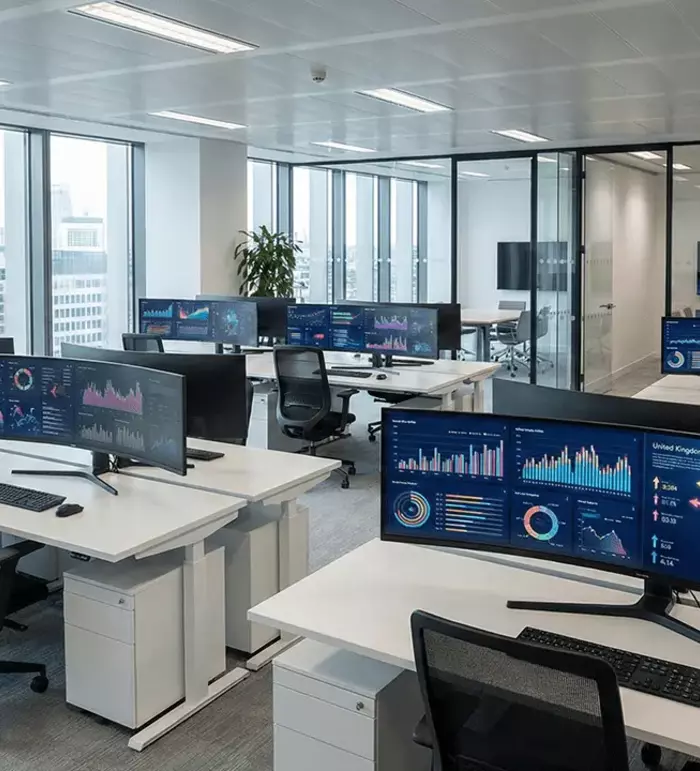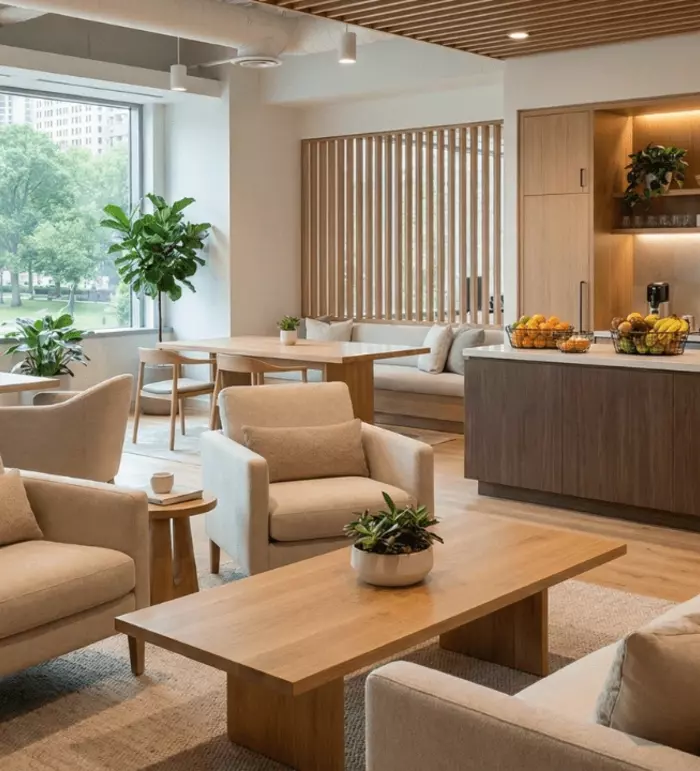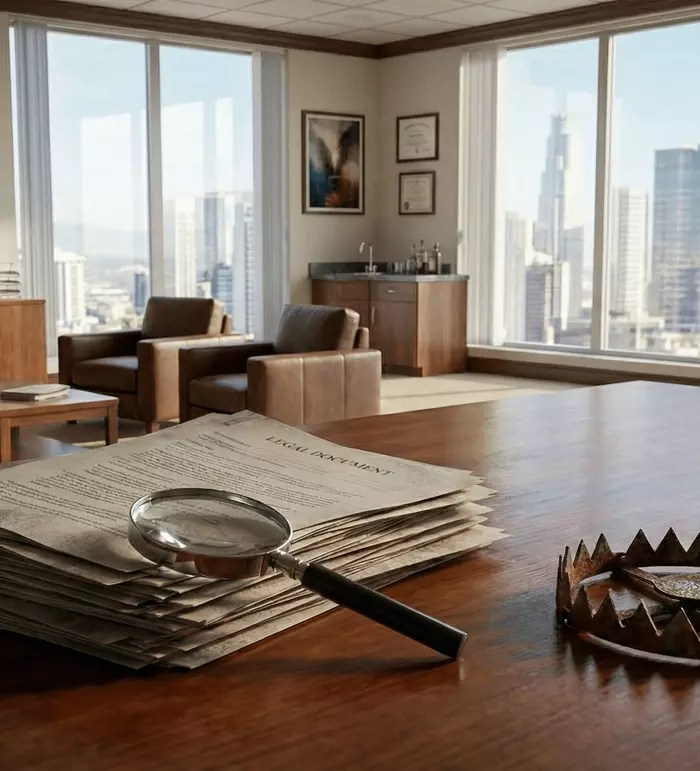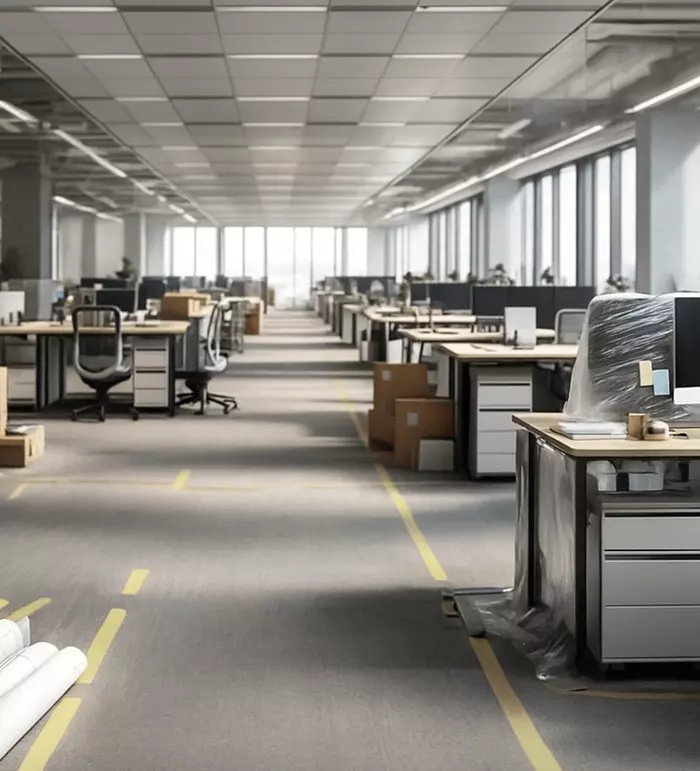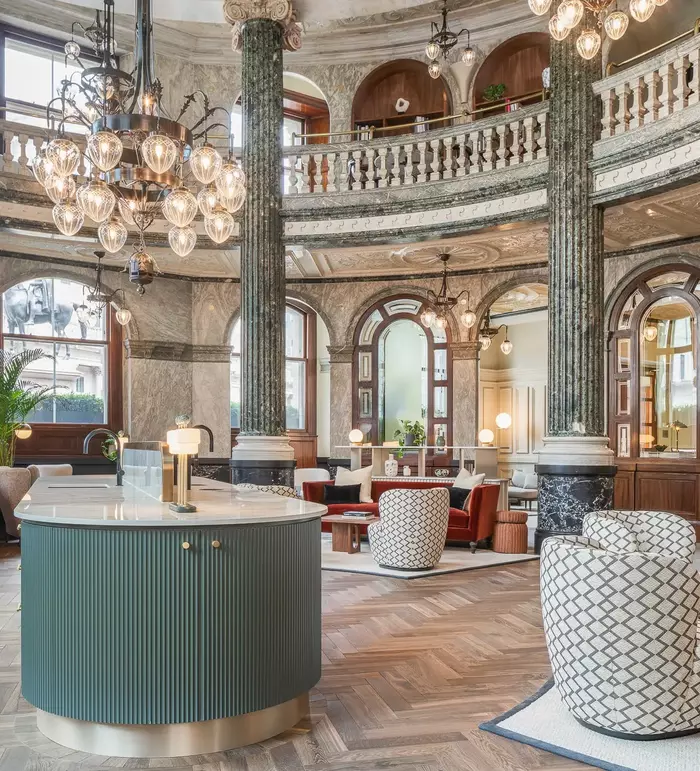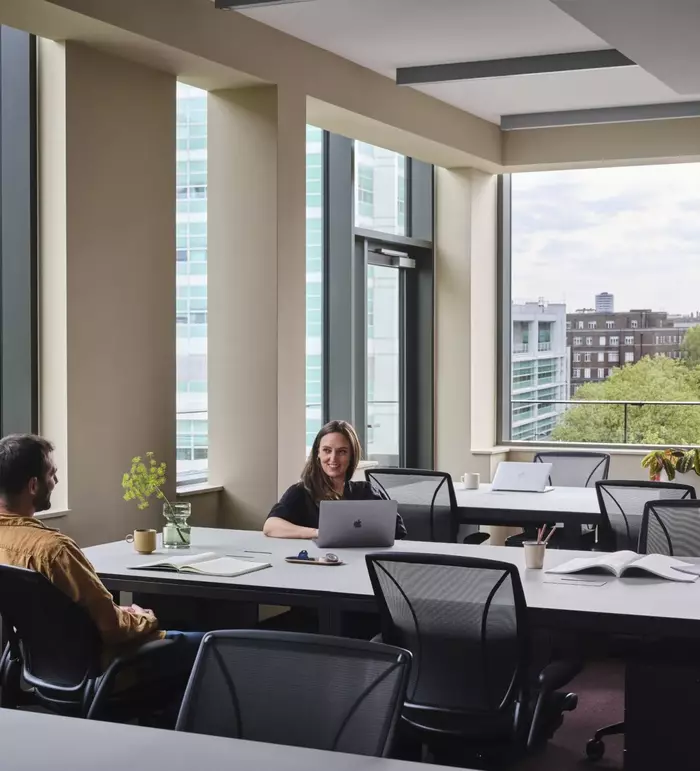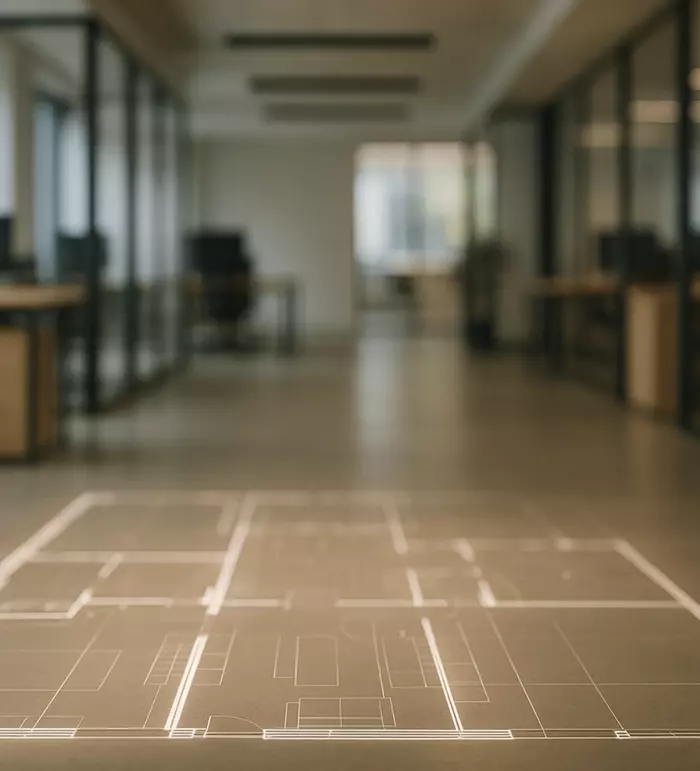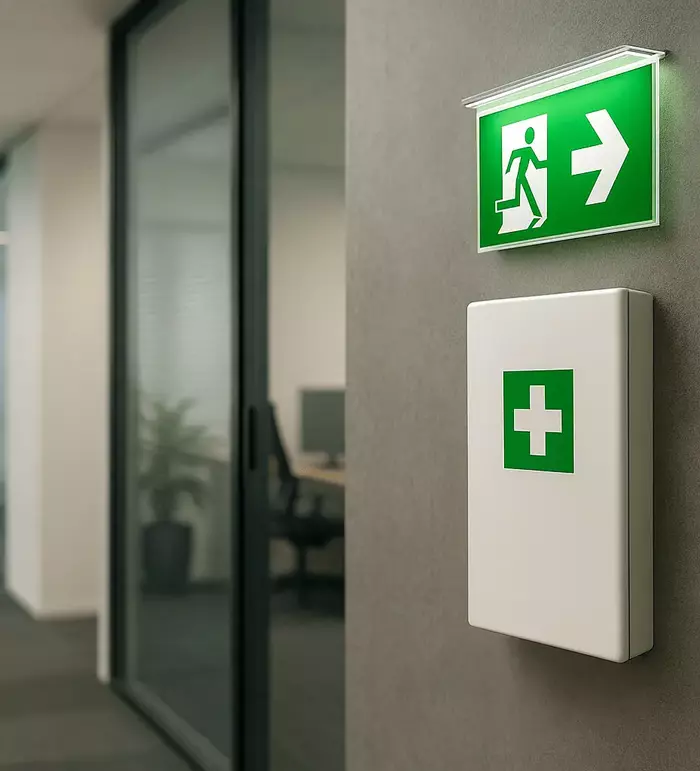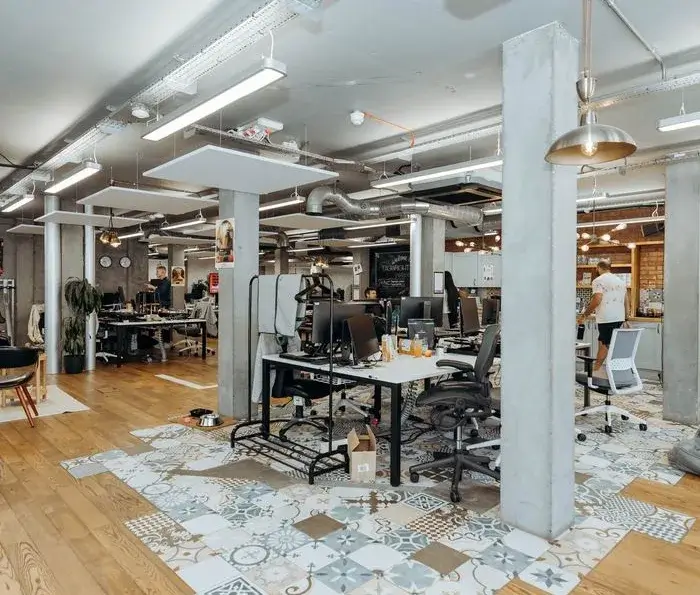From the office cubicle’s conception in the 1960s to the open-plan office of the 1980s. Gone is the rigorous 9-5 clock-in and clock-out structure of the past.
We now have increasingly flexible working patterns and co-working office spaces. The flexibility of workspace design trends is mirrored in how work itself has shifted. Let’s unpack exactly how workspace design trends developed and why they evolved.
How did we get here?
The workplace of 2020 is unrecognisable from 50+ years ago and may well be unrecognisable in another 50 years to come. When you picture the cubicle office of the 60s and the playground that is Google HQ today, you might just start to wonder, how did we get here?
We want to explain that journey. That way, we can get some perspective on what’s to come.
1. Post World War II offices
Many associate office design with cubicles but they weren’t always a thing. Before the cubicle there were open-plan offices but nothing like what we might picture today.
The desks were nailed to the floor in long rows. Static lines of workers were crammed together. Calls, conversations, and equipment were on show for all to hear, see, and trip up over.
To top it all off, these spaces were hierarchically organised with the manager usually having their own private desk at the head of or corner of the room. (Think Mad Men).
By the 1960s, inventor Robert Propst foresaw the boom of white-collar industries and knew the office layout needed to change. Cue the office cubicle. It was private and therefore more productive. Or so they thought.
2. The office cubicle
Born: 1965
Dubbed: ‘The Action Office’

I know it’s hard to believe, but the office cubicle really was revolutionary in its time.
The cubicle, or ‘action office’, was inspired by scientific management and mimicked the layouts of labor factories at the time but with three dividing walls to increase concentration and autonomous working.
It was named the most successful design of the previous 25 years at the World Design Conference in 1985!
Like it or lump it, the office cubicle made sense at the time for one simple reason - there was no internet until 1990. No word processors, no messaging software, just a keyboard, and some very basic functions. (Like the computer Sam types on in Ghost - see below):
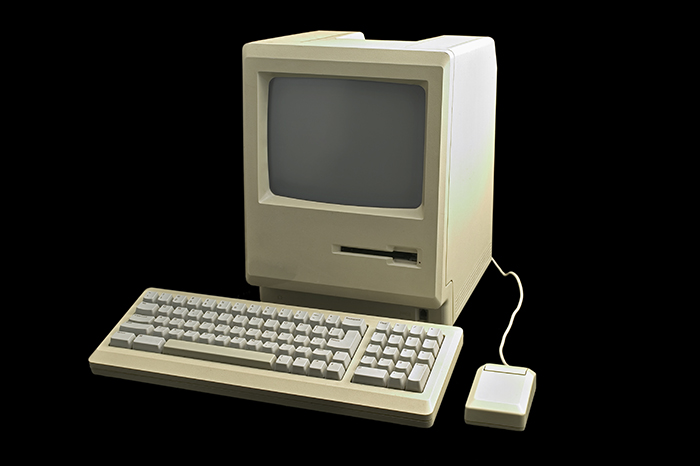
This might seem obvious but it’s important to remember that an office design correlates with the nature of work. Where work was completed autonomously - phone calls, typing, printing documents, talking with clients - the workspace architecture followed suit.
Believe it or not, the cubicle was actually preferable to the distractions and the “drudgery of open office plans.” As Good & Co Recruiters extensive research into business’ personalities observes,
“Workers by and large hated the open plan. It was noisy and distracting, and gave them no privacy.”
That said, the cubicle came with its own set of infamous weaknesses. They hindered motivation in employees, for one. Words like boring, soulless, isolating, and depressing come to mind when remembering the three-walled cubicle, or ‘action office’ as it was known.
So back came the open-plan.
3. The open-plan layout: take two.
Born: 1970s
Dubbed: ‘The open-plan office, take two’
The return to the open-plan office came about for three distinct reasons:
1. To combat feelings of loneliness and disengagement that went with the cubicle.

A 1997 survey conducted by The Organisations, Buildings and Information Technology (ORBIT), a multinational clients’ sponsored research programme found that 93% of people would prefer an alternative to a cubicle set-up.
2. The development of computers and the internet meant the way people worked changed.
Technology could compact data and information that was previously stored in filing cabinets and paper files. This freed up workspace and employees for collaboration, problem-solving and idea-generating work.
3. Productivity, was no longer the benefit reaped from independent working.
Cubicles were increasing feelings of isolation, boredom and productivity levels plummeted. Productivity was then disassociated with autonomous working and instead correlated with collaborative working. The idea being that when you literally tear down the walls, you get increased conversation and information speed at work.
The benefits of open-plan working are widely known and recognized nowadays. The issue is the return to the open-plan office brought with it the crisis of privacy.
The extreme move from cubicle to open-plan was always going to be a fault-filled one. It seems we just did not learn or adapt from past mistakes. All of the shortcomings of the previous open-plan model simply returned in the 90s with word processors instead of typewriters.
A few key issues with ‘open-plan offices: take two’ that continue to be a problem 25 years on:
- Not everyone is extroverted. People struggled with the forceful requirement to be forever social at work.
- The open-plan workplace became a homogenized zone. There was no investment in personalisation or differentiation of job roles, demotivating employees.
- Concentration levels suffered once more.
- If your team or the nature of your work is competitive, you’re just all up in everyone’s business.
And its effects are being felt throughout organisations. As Flexioffices’ Business Development Director, Michael Dubicki acknowledges,
“Open-plan offices of the last quarter century impacted senior management in a number of ways”.
In an open-plan office, sensitive business matters can no longer be discussed over the desk and now require private spaces. Michael explains,
“Open-plan offices mean conversations are overheard and discretion suffers. This is the crisis of privacy in the workplace.”
The design of the workplace warranted rethinking once again. This time, innovative thinking and designers caught on and rectified what had been previously overlooked.
Back to the drawing board...
4. Activity Based Working (ABW) solutions have revolutionised open-plan office designs
Born: 1989 (Coined by Dutch consultant, Erik Veldhoen)
Dubbed: ABW solutions
Today, 70% of offices are open-plan. Activity based working has united the cubicle and open-plan office designs of the past and is reaping the benefits of both.
- ABW solutions are a strategic business strategy that don’t limit one way of working to one type of work area.
Zones previously reserved for one specific type of working - the desk, for example - are now adaptable, allowing for collaborative or individual work. Breakout spaces - previously just thought of as ‘lunch rooms’ - can now double as informal meeting areas.
- ABW has been described as the “biggest change in the way people work since the Industrial Revolution” for its decoupling of work with assigned desks.
As the President of StrongProject modern office furniture designers, Jeff Pochepan explains,

“ABW presents a mix of open, semi-private and private spaces in one commercial office to meet employees where they are in the moment, not forcing workers to accomplish their tasks in a specific non-ideal space. But in this contemporary evolution of ABW, employees still keep their desks.”
- Serviced offices increasing popularity can be largely attributed to the industry’s implementation of ABW solutions in their design.
In serviced office spaces, there can be designated quiet work stations, breakout spaces, conference rooms, private meeting rooms, and private offices all under one roof.
This is where serviced offices have nailed it, explains Michael Dubicki,
“You get the privacy of a safe and discreet environment coupled with the collaborative nature of open-office plans. It’s the best of both worlds.”

A recent survey conducted by real estate advisors, CBRE found that two-thirds of 400 multinational corporations plan to implement shared workplaces by 2020. It is thanks to the initiative of ABW that shared workplaces are on the rise.
But it’s not just ABW that marks serviced offices as revolutionary for rectifying the weaknesses that the cubicle and open-offices both presented. It’s the way these spaces make you feel.
5. The next evolution: ABW with luxe hotel workspace designs
Born: early 2000s
Dubbed: ‘luxe hotels’
We are not trying to suggest that workplaces have become hotels. We don’t go to work and get pampered (although some companies do offer massages to their employees). But what we do get in these beautifully and innovatively designed spaces is the sense that our workplace is catering to our societal need for a work-life balance.
For the first time, employees’ wellbeing is at the heart of workplace design trends. Workspaces are in prime locations with furniture, storage, light, and air levels all curated to boost workers’ wellness and productivity.
Facilities that go beyond the basics like games rooms, relaxation areas, and bountiful breakout spaces are all important luxuries workspaces have afforded to promote employee wellbeing and ensure their efficiency, productivity, and retention levels stay on the up.
As history shows, workplace design importantly impacts the way people work and today is no different. A luxury workspace provides an environment where employees are happier and therefore more productive.
So what’s next?
This brings us to the present day: the era of luxe hotels interiors with ABW solutions in serviced offices.
It is a combination of ABW solutions, biophilic (incorporating elements of the natural world), and luxurious designs that have reignited the energetic and practical qualities of the workplace that the office cubicle once sought to do half a century ago.
With all of this architectural design and innovative perspective of the workplace on the rise, we start to wonder: what will such innovations and technologies bring next to the workplace? We explored this very question in a series of blogs, The Future of the Workplace. You can find out more here.

